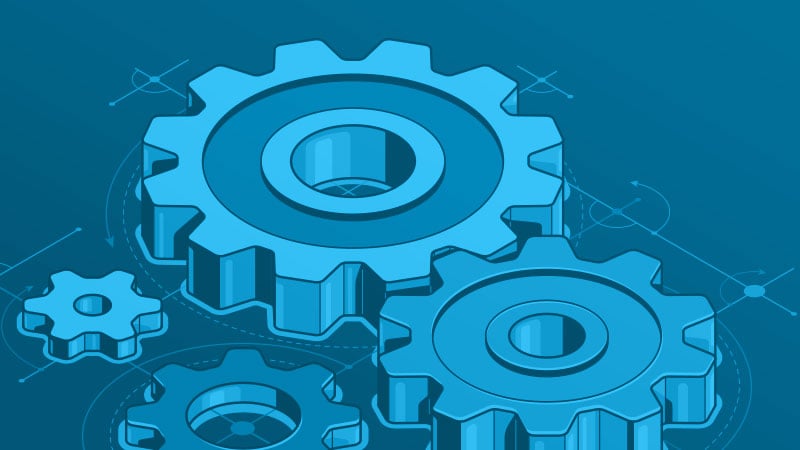The AI Overengineering Trap
With unlimited potential also comes unlimited potential to waste time and resources. Most programming languages since the 1950s essentially have unlimited potential to create new systems (see Turing-completeness for more details). The advent of AI brings this capacity from the realm of pro-code computer scientists to the desk of everyone with no-code and low-code tools. There can be a glory and prestige in overengineering: One famous 1976 Mercedes 240D drove 2.8 million miles before being inducted into a German museum (It was owned by a Taxi driver.) Unfortunately, complex engineering isn’t all glory. Like a Rube-Goldberg device of the computer: the more complex a system is, the more opportunity for error, waste, and maintenance upkeep. This dimension of system design applies now whether adopting a targeted AI solution or configuring custom AI agents. Let's examine some core principles of professional system design that can help both users and designers of AI systems avoid the pitfalls of over-engineering with AI.
Programmers often experience a profound sense of awe at potential functions when creating something new. The computer scientist Frederick Brooks described the rewards of programming to include the joy of making useful things and solving puzzles. However, there also comes the despair of debugging, tedious implementation, or discovering time has been spent building the wrong thing.
With the advent of low-code and no-code AI automation, more people than ever before can experience that joy and despair. Enterprise AI platforms provide many opportunities for automation now with custom agents or automation platforms more tailored to common business needs.
Project Maturity Scale
Rome wasn't built in a day, nor was any comprehensive platform of enterprise technology solutions. New technology projects must grow with the community of users established with them. Here is a scale of project maturity based on investment and adoption:
1. Theoretical Design
2. Proof of Concept
3. Minimum-Viable Product
4. Functioning System
5. Optimized Solution
6. Comprehensive platform of solutions
Theoretical Design Concept: This is the initial light-bulb moment where a new idea is created but untested. We can see potential value. Maybe all we know is that a need or pain-point exists and we have a rough idea that a family of technologies may help with it.
Proof of Concept: The PoC brings proof to the initial concept. It must demonstrate that the core functionality works, regardless of ease-of-use or support needed to do so. It should be demonstrable and repeatable. This makes it a proof to others and not just a proof to oneself. We generally do not want to invest a lot of resources into a PoC. It may be a lost cause.
Minimum Viable Product: An MVP validates market potential where a PoC validates functionality. As a PoC may be fun to show at a trade show or conference, the MVP focuses on a minimal feature set to serve customers and support for future development.
Functioning System: This is a complete functioning system that may range from a minimum-viable product to a polished system. Where the PoC demonstrates core functionality, a functioning system has demonstrated that it can be used in practice.
Optimized Solution: When a fully functioning solution has demonstrated enough value, it may merit further investment into optimizing aspects of its performance. These systems require additional creative design to push their workflows to better performance heights.
Comprehensive Platform: When one solution is optimized to succeed, it creates opportunity to provide additional solutions in more coherent or unified interfaces.
Design Complexity
Project designers should always ask one key question: "Have we done this before?"
Operations: we have done this before, in this way, in this place, and with these people.
Development: we have done this before, but not in this way or with these people.
Research: we haven't done this before, and we need to figure out how to do it.
Too-rapid adoption into operational environments carries unnecessary risk. Differentiators earn confidence and trust. A considerate product design approach provides users with immediate feedback and control over automation based on how confident the user is in the system. The less established a next step is, the more time can be saved through effective experiment design. While trial-and-error are often the most effective way to debug operational technologies, purely random trial-and-error is the slowest and most wasteful way to perform research.
AI Tradeoffs
Now let's combine the above: considering the Project Risk Map, we can make engineering decisions about tooling for a given project. Projects with higher risk have a higher likelihood of point failures, require more iteration, and benefit from fast and low-cost iteration.

(An optimized operational system is more reliable than theoretical research).
Consider the defining attributes of deep neural network AI tools (LLMs, VLMs):
-
Scoped task strengths: AI tools are very effective at well-defined tasks including instruction following, text processing, and image generation.
-
Scoped task speed: AI tools are much faster to utilize and work with.
-
Unreliability: AI tools are rarely as consistent and reliable as non-AI methods without additional effort to enforce consistency.
-
Costs: AI tools are remarkably expensive to operate.
Given their tendency for rapid implementation and wide scope of tasks, AI components are ideal for initial PoC and MVP implementations. However, the expensive operation costs of AI mean they may not always be suitable for a full implementation or optimized solution. This applies both to your use of general AI agents, as well as large-scale AI platforms. More mature and efficient operational platforms will not use expensive VLM or LLM models where they aren’t absolutely necessary and will pass cost savings to their users.
So, what can we do to operationalize or make systems more reliable other than rely on general AI Agents? Alternatives include: smaller language models, non-LLM or specialized models, conventional language processing, and smaller-scoped project structures that learn and adjust continuously.
Overengineered ML and Small Language Models
The overengineering habit afflicting machine learning and statistics, and we feel its effects as AI users. You can always use an unnecessarily complex model for a simple problem. If our requirement is to learn a linear model such as Y = mX + b, this can typically be solved with algebra, a mere 2 parameters (M and B), and is easily implemented in any technology platform that supports basic arithmetic. However, a million-parameter neural network will gladly solve the same problem for us while paying for sophisticated TPU processing, storing a million unnecessary parameters, and requiring specialized software to train and operate the model.
Academia and technology industries have shared an unhealthy fixation on oversized models for a long time. A single model that can perform two tasks with mediocrity displays generalization better than two models that each excel at their respective task. This generalization hints toward progress at general intelligence, confers prestige on the creators, and in some cases may win investment from those with artificial general intelligence (AGI) hopes who are willing to overlook current shortcomings. The creators of DeepSeek took advantage of this bias to burst into the competitive AI scene in early 2025 by training an ensemble of other open-source AI models. An ensemble leverages the strengths of multiple models by learning to route different tasks to the model that is best for each. Enterprise AI models today still leverage ensemble task routing methods.
Deep neural networks are similarly oversized for many tasks. In these cases, we can replace the use of the large model with specially-trained and more efficient models, distill large language models into more efficient packages, or optimize the knowledge base used for RAG architectures. Some emerging tech examples who take this approach are Arcee, EdgeRunner, Malted AI, Assisterr AI, Vectrix AI, and Shodh.
Continuous Learning and CDIME
Sometimes a project is over-engineered because there is no permanent solution to a problem. We don't learn a single static time to judge sunrise and sunset. These times change throughout the year. Better to sense light each day than try to learn one complex formula that changes throughout the seasons, using historical weather data. This is a concept called data drift or concept drift: a model trained for one time will become invalid later because the data and environment around it have changed over time. Many challenges involving customer feedback or customer behavior are similar though they may still require complex models to address.
ML-Ops and the ML lifecycle are starting to embrace CDIME: Continuous Deployment, Integration, Monitoring, and Evaluation. Models may be updated when model performance drops outside a predetermined threshold. Root Signals provides an example of continuous monitoring of LLMs, Okareo provides a platform for test data generation, and Giskard AI supports continuous red-team testing. Terra Security bring continuous penetration testing for web applications.
Conclusion
It’s easy to chase the allure of more: more agents, more models, more layers of abstraction, or that white whale of AGI: the single biggest model of all. So, when you find yourself thinking “This would be great if it was more accurate, more reliable, or more affordable,” you’ve likely uncovered not a failure of imagination, but a failure of design discipline. True innovation lies not in how much we build, but in how elegantly we align technology to purpose. In this era where complexity is cheap and simplicity is rare, restraint is the most advanced engineering skill of all.

Cory Root believes all language is code and all code is data. He knows many computer languages, some human language, and has a convert’s zeal for Python and drop caps.Cory spent the last decade working in statistical natural language understanding, distributed data processing, and machine learning for embedded, edge, and cloud systems. Now, he turns ideas into things that work in global enterprise companies.

